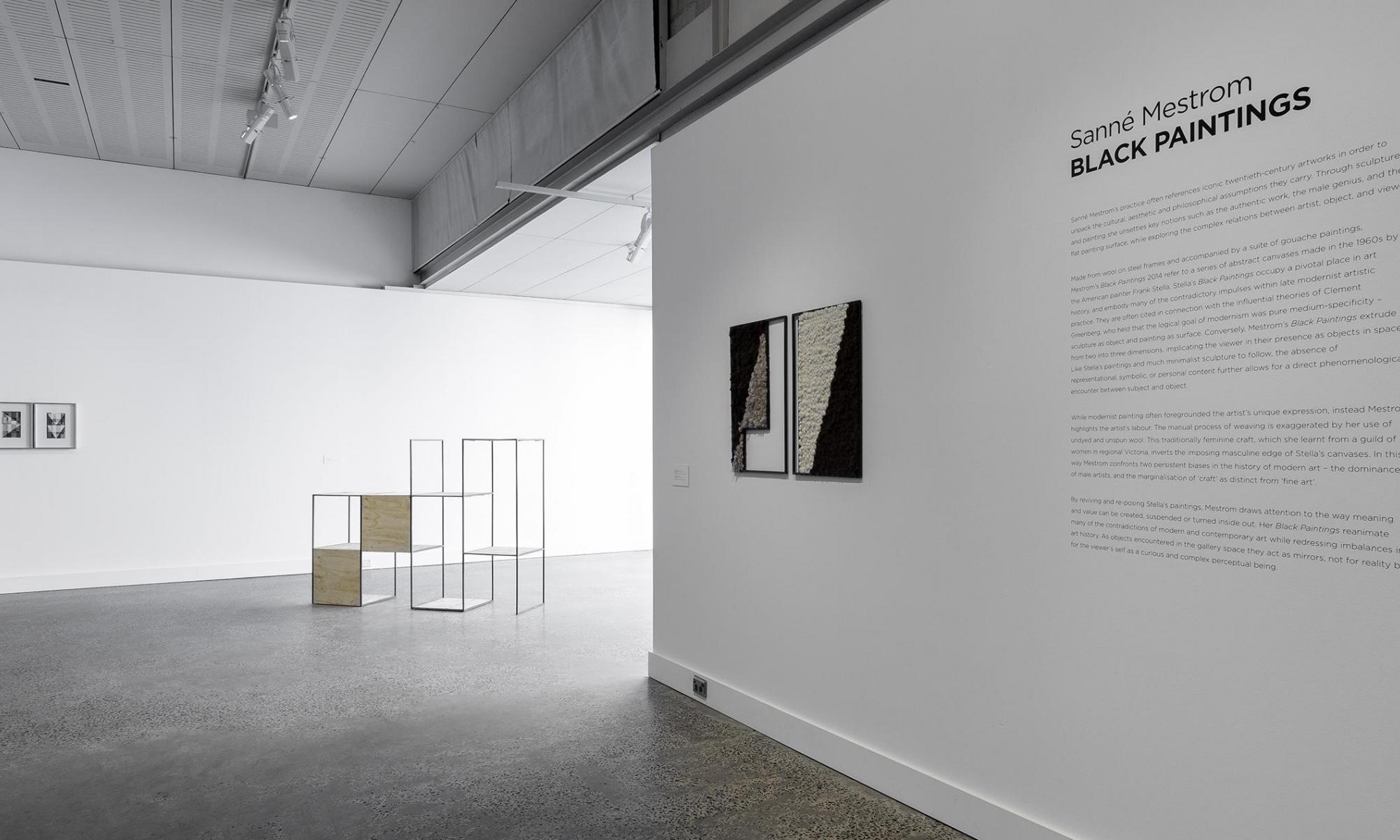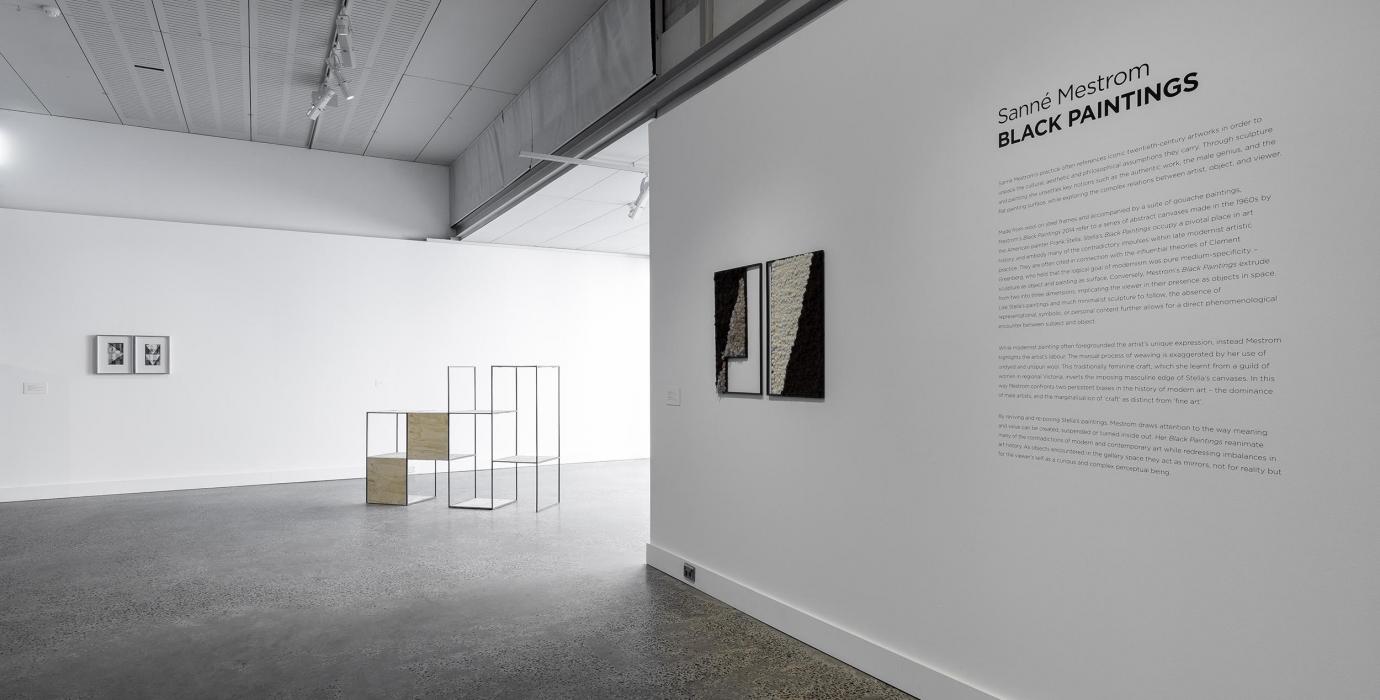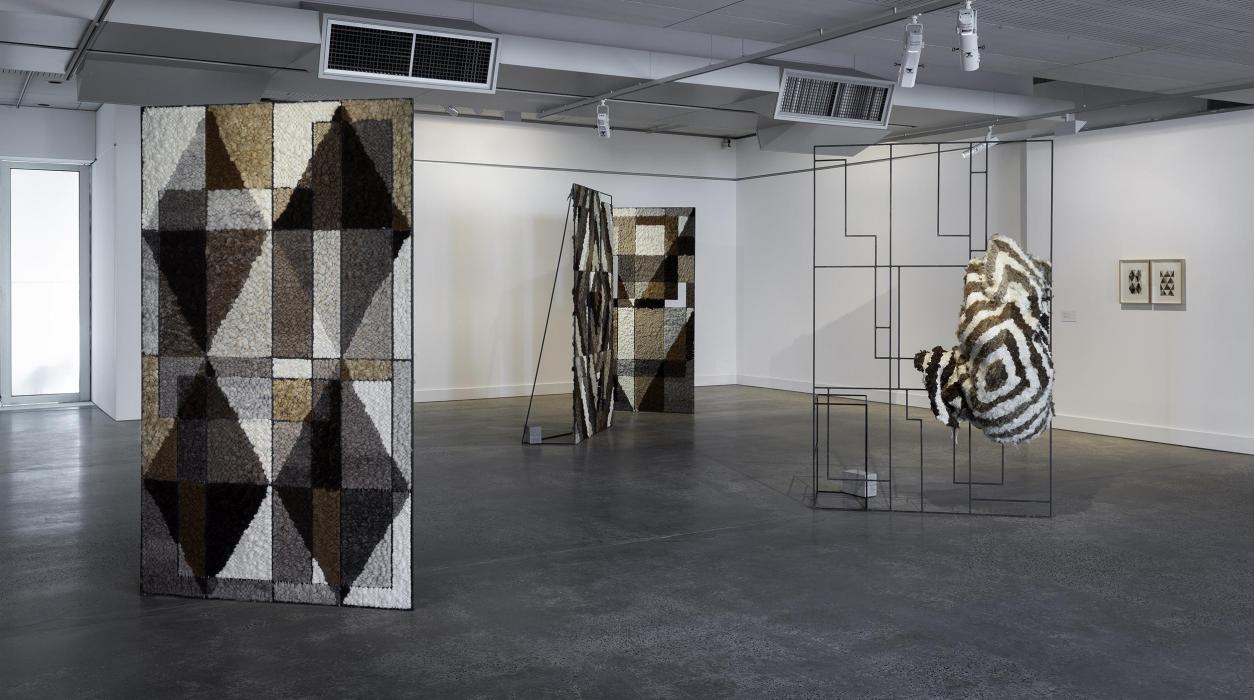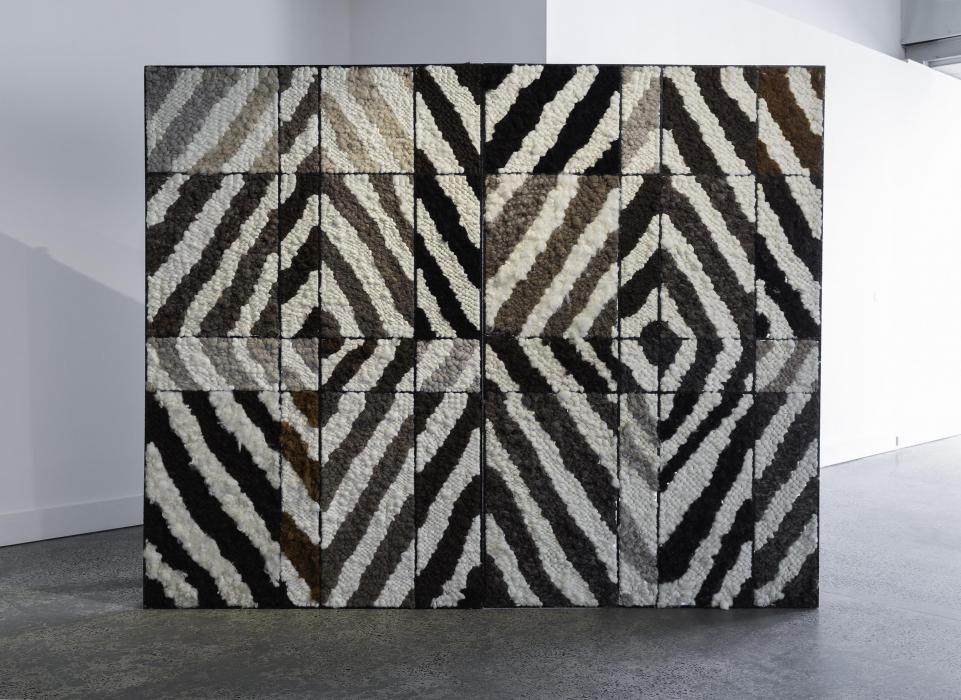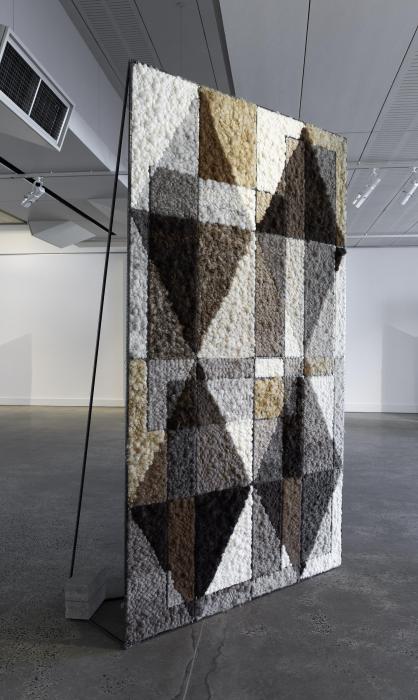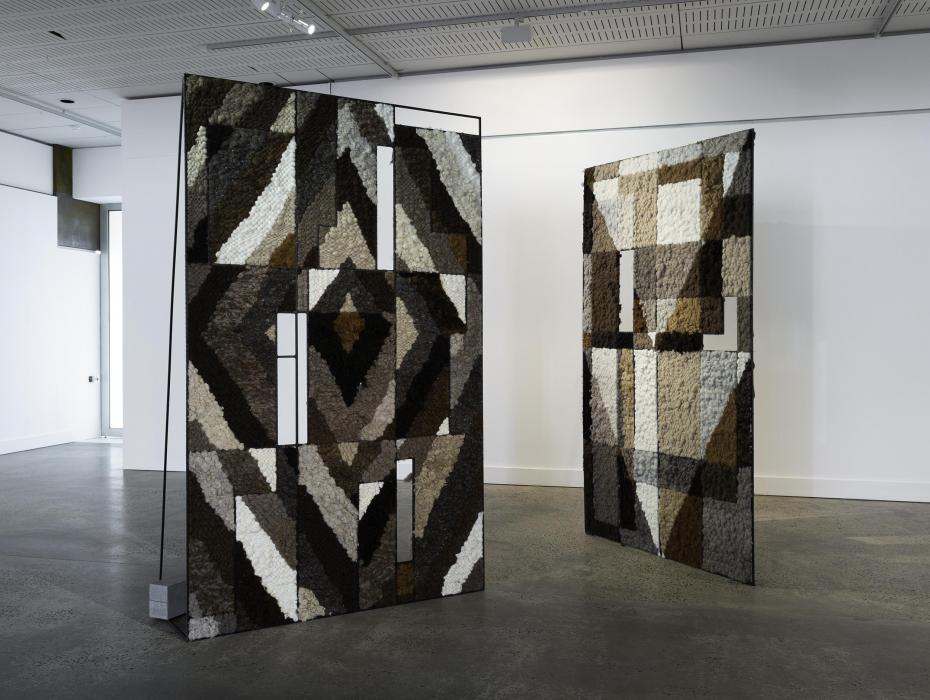Sanné Mestrom: Black Paintings
Over the past seven years, Sanné Mestrom has mined the Euro-American art historical canon, turning to the big names of Modernism and their iconic works as a catalyst for remaking and reinterpreting recognisable 20th-century motifs. This approach began during Mestrom’s studio residency at Gertrude Contemporary in 2011, with her exhibition The Reclining Nude in the now non-existent Gertrude Studio 12. Since that exhibition Mestrom’s practice has become progressively more focussed on Modernism, referencing the work of figures such as Morandi, Picasso, Brancusi and Matisse.
The discursive framework that accompanies Mestrom’s work highlights a feminist perspective that informs her material approach to history. Distinct from other critical artistic investigations of the past that aim to retrieve and reframe localised, overlooked histories, Mestrom engages canonised modernist ‘masters’. The critical positioning of Mestrom’s practice is determined through the material processes of developing her sculptures. Whilst discussing her 2013 exhibition The Internal Logic, Mestrom described her use of an eclectic array of materials—bronze, wool, steel, ceramic, stone, wood—and her deskilled approach as a feminist gesture that resists technical vocabularies that are inherently patriarchal. At the time I found this somewhat perplexing given what appeared as technically adept and confident works, including originally cardboard Picasso/Matisse-esque figures extremely well cast in bronze—polished and refined without any apparent residue of the casting process. Similarly, the deskilling outlined by Mestrom is inherent to many of the modernists’ work she was re-making, seemingly aligning her with the artists she sought to critique.
This confusion about the accuracy of the material critique generated by Mestrom’s work has become even more apparent in the second iteration of her 2014 exhibition, Black Paintings (originally exhibited at the now closed Utopian Slumps) currently on show at McClelland Sculpture Gallery. Mestrom has yet again taken on a well-known male art historical figure and his iconic work—this time Frank Stella. In particular, Stella’s Black Paintings developed between 1958-1960 are the namesake of Mestrom’s installation. The heavy hitting, early geometric abstract painter garnered fame as he rose up amidst the clamour of Clement Greenberg’s formalist proselytising that prefaced yet another boys club movement to add to the tiresome lineage of patriarchal modernism. It is through a cross referencing of this contextual history against some material and formal aspects of Stella’s Black Paintings that Mestrom begins to form a critical vocabulary that reductively undercuts the physical experience of her homage to this modernist ‘titan’.
Upon entering the gallery, a large wall text positions the ‘imposing masculine edge’ of Stella’s abstraction as demonstrative of a prototypical male art historical lineage, and as an inverse, McClelland’s website cites Mestrom’s use of the ‘comforting qualities of wool and the associated notions of weaving as a feminine craft’ as an antidote. The assertions made about the material and formal qualities of Stella’s work contrast with my own understanding of the paintings. Rather than mechanized, hard-edge, ‘masculine’ abstraction, Stella’s paintings of this early series such as Delphine and Hippolyte (1959) appear feathery, matte, absorbing.[1] The gradual processes of applying paint are emphasised, as the variations in the bands of black enamel indicate the artist’s decision-making process in the finished composition. Whilst the discourse surrounding this period in Stella’s oeuvre positions the works as a shift away from gestural abstract expressionism, the variations in his painterly application undercut assertions of their subjective neutrality. And despite their palette and obvious formal differences, I had always aligned Stella’s early abstraction as closer to an Agnes Martin than a hard-edge Ellsworth Kelly or Sam Gill. They feel paced, process-based, toying with the ability of paint to sit on or absorb into the support; generating edges that slightly bleed into each other, whilst creating distilled, balanced compositions. Like Martin’s paintings, I had been struck by the presence of Stella’s work as paramount to their interpretation and referentiality. And, indeed, Stella wrote about his use of supports that were thicker than those common at the time in order for his works to hover off of the wall, sculpturally occupying a space.
Walking into Mestrom’s exhibition, there is a similar attention given to the sculptural ‘presence’ of five free-standing screens. The screens occupy the centre of the gallery surrounded by smaller gouaches and wall-based reliefs. Brown, beige, white and black natural wool is woven in-between thin rectilinear welded frames, and, much like a Stella, seem to have a starting point and expand out (or in) to fill the frame in which the material hovers. These are broken up—in some instances seemingly arbitrarily—by openings in the screens, punctuations amidst the diamond and rectangular geometric forms.
Reminiscent of boho-chic décor with their heavy tufts of wool, the screens nevertheless resist becoming interior design through odd, impractical sculptural insertions of bricks and cinder blocks that hold the screens in place. The objects, despite their skeletal frames, stand over the viewer and occupy the Modernist, domestically scaled gallery, causing one to slowly pace around the objects, progressively revealing their details. The process of the wool’s weaving into the frame is made apparent through the satisfying, visible tethering of the material to its support. In the most arresting screens the concentric diamonds of muted tones radiate out from the central axis with the punctuations of negative spaces acting to heighten this radiation like rocks punctuating ripples. The tempered variation in hues play across the eye allowing one’s vision to find respite in the negative spaces offered by Mestrom.
Whilst materially and even visually quite distinct from Stella’s paintings, I’m struck by the numerous correlations between two artists works. These include the sense of process, physical labour, material exploration, matte quality, but most of all the sculptural presence the works have in relation to the body. For all of the thrilling visual and phenomenologically captivating aspects of the work, the wall text honing in on the critical aspect of the work hovers, problematically, in the background.
The simplified assertions about the formal and material aspects of Stella’s paintings and Mestrom’s adversarial approach feel distinct from my experience of both of their work. The binary logic of hard vs. soft, masculine vs. feminine and craft vs. art is presented as a way to formulate Mestrom’s drive to engage Stella and feels like an oversimplification. One wonders why, what appears to be closer to a homage and love affair with Stella’s work, is being positioned as an adversarial critical exploration? As someone who is drawn to the material qualities of both Mestrom and Stella’s work, I find myself sceptical of the language surrounding the sculptures and paintings. I anticipate that the epistemological enquiry of both of their practices is deeper than the oppositional binaries being elicited to give the work grounding.
[1] This painting has explicit formal resonances with Mestrom’s Black painting III 2014

